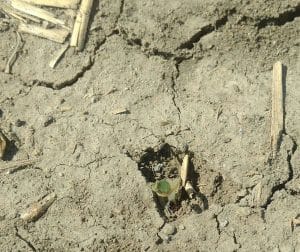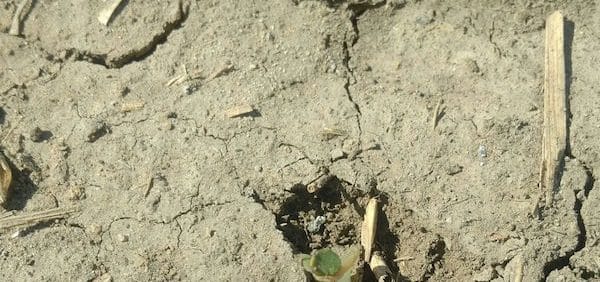Crop insurance deadlines. ALBERTA: AFSC in Alberta has extended its recommended seeding date deadlines for yield and quality coverage to June 5 for Argentine canola and June 15 for Polish canola. The original deadline was May 31. Yield-only insurance deadline is still June 20. Read more. SASKATCHEWAN: For seeding deadlines in Saskatchewan contact your local SCIC office. Find office contacts and more information here. MANITOBA: Seeding deadlines for Manitoba are June 15 for Argentine canola in risk area 1, June 10 for Argentine canola in risk area 2 and June 20 for Polish. Read more. B.C.: For 2017 only, B.C. has adjusted its production insurance seeding deadline for Argentine canola to June 1. Polish stays at June 5. Details: https://www.canolawatch.org/2017/05/25/how-late-is-too-late-to-seed-canola/
“Recognizing herbicide residue and drift injury in canola”. Seeing damage? Think it might be herbicide related? Check out this CCC publication.
Gopher management. Richardson ground squirrels — often mistakenly called “gophers” — are flourishing in some locations. Gophers can eat up large areas within a canola field, and their damage is often mistakenly blamed on cutworms or other insects. Strychnine baits and, in some jurisdictions, mix-it-yourself strychnine liquid is available for gopher control. Talk to your municipal or county office for options in your area. Alberta Agriculture management tips Saskatchewan Agriculture management tips
Tent caterpillars. Tent caterpillar do not eat canola, even if some migrate across a field.
Cutworm scouting. Got patches of missing plants? It could be cutworms. Read here for details on how to scout and make the spray decision. Take the Canola Watch cutworm quiz.

What to do about crusting? Rain after seeding can often cause top soil to crust, stopping the emergence of canola seedlings. There are no reliable solutions other than to wait for rain. Some growers have reseeded the worst sections of fields. A light harrowing might help if nothing has come through. Do a couple passes then assess whether canola seedlings are being ripped out of the ground. Harrowing too close to emergence can be harmful to a shallow seeded crop such as canola and may not be worth the risk. Using a roller may be worse than harrowing when soils are wet below the crust. Instead of cracking up the soil surface, a roller could turn the whole topsoil zone to concrete. Again, there is very little research on how to manage crusting. It’s trial and error. Read more.
Keep It Clean. Only apply pesticides that are registered for use on canola in Canada and won’t create trade concerns. Talk to your grain buyer to ensure that the pesticides you’re using are acceptable to your customers. Follow the correct rates and timing listed on the label. Read more.

